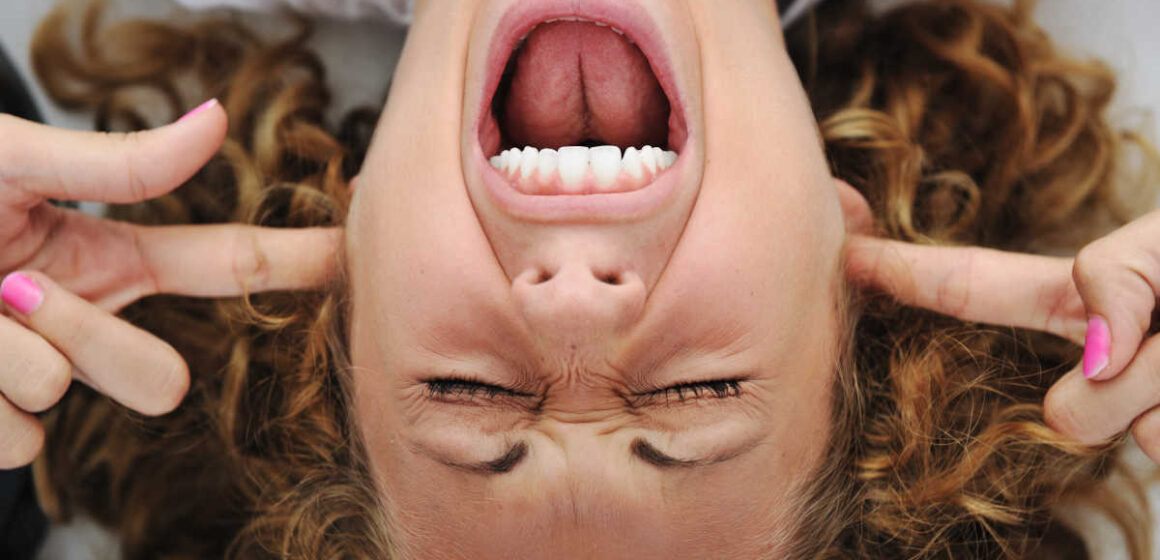How to Address Impulse Control Issues in Adolescent Clients
Many teens struggle with impulsiveness, acting without thinking. One important fact is that the adolescent brain is still developing, especially areas that control impulses. This article will offer strategies to help manage impulse control issues in adolescents effectively.
Keep reading for insights and solutions.
Key Takeaways
- Teens with impulse control disorders can benefit from cognitive behavioral therapy (CBT), which helps them identify and change negative thought patterns and behaviors.
- Creating a structured routine, practicing meditation, and engaging in regular exercise are effective self-help strategies that can improve teens’ ability to manage impulses.
- Early diagnosis and intervention are essential for managing conditions like Oppositional Defiant Disorder (ODD) and Conduct Disorder, preventing them from negatively impacting the teen’s daily life and relationships.
- Art therapy provides a unique way for adolescents to express their emotions, helping them deal with impulse control issues in a healthy and creative manner.
- Family therapy strengthens communication within the family unit, making it easier for teens to navigate their emotions and make better decisions.
Understanding Impulse Control in Adolescents
Adolescents often experience rapid changes in their emotional and physical states, which directly impact their impulse control abilities. During these years, the prefrontal cortex, responsible for decision-making and self-control, is still developing.
This means teenagers might engage in impulsive behaviors because their brains haven’t fully mastered the art of thinking through the consequences of their actions yet. As they navigate through complex feelings and emotions without a fully matured cognitive control system, it becomes challenging to manage impulses effectively.
Developing strong impulse control is crucial for adolescents as it lays the groundwork for healthy emotional regulation and decision-making skills later in life. Practicing mindfulness exercises can enhance attention focus and decrease impulsivity by teaching teens how to pause before acting on an impulse.
Furthermore, engaging in activities that require executive functioning skills like planning, problem-solving, and organizing can also promote better impulse management. These approaches not only help teenagers understand the importance of patience but also guide them toward making informed choices rather than yielding to immediate desires or pressures.
Types of Impulse Control Disorders in Teens
Impulse control disorders manifest in various ways among adolescents, each with its own set of challenges. Teens might find themselves grappling with behaviors that they feel powerless to stop, indicating a deeper issue at play.
Oppositional Defiant Disorder (ODD)
Oppositional Defiant Disorder (ODD) affects many adolescents, displaying a pattern of angry or irritable mood, argumentative or defiant behavior, and spitefulness or vindictiveness.
Young people with ODD often struggle to follow rules, have frequent temper outbursts, and argue with authority figures. This goes beyond occasional teenage rebelliousness. It’s a behavioral disorder that can significantly impact a child’s daily life and relationships.
Early detection and intervention are crucial for managing ODD effectively. Treatment may include cognitive-behavioral therapy (CBT), which helps improve problem-solving skills, emotional regulation, and decrease negative behaviors.
Family therapy also plays an essential role in treatment by improving communication among family members and establishing supportive home environments. These strategies aim to reduce conflicts and build resilience in young patients dealing with Oppositional Defiant Disorder.
Intermittent Explosive Disorder
Moving from Oppositional Defiant Disorder, we encounter Intermittent Explosive Disorder (IED), another impulse-control disorder that impacts adolescents. IED is characterized by sudden episodes of aggressive behavior or angry outbursts that are grossly out of proportion to the situation.
These episodes often involve verbal aggression, physical violence towards objects, other people, or animals, and can cause significant distress in the life of a teen.
Individuals with this disorder may feel a sense of relief after an episode but frequently express remorse once the anger subsides. The onset of IED typically occurs during late childhood or adolescence and can lead to various problems such as disrupted relationships and legal issues if left untreated.
Identifying and addressing IED early with cognitive behavioral therapy (CBT) and psychotherapy can help manage symptoms effectively.
Kleptomania
Kleptomania is a complex impulse-control disorder that compels individuals to steal items they often don’t need and that have little value. This mental health condition involves repeated, uncontrollable urges to steal, creating significant distress or problems in daily functioning.
Teens with kleptomania might feel increasing tension before the act of stealing, followed by relief or gratification afterwards.
This condition differs from typical adolescent shoplifting because it’s not driven by economic need or peer pressure. Instead, it stems from an intense urge that the individual finds difficult to resist.
Effective treatments for kleptomania include cognitive behavioral therapy and medication to help manage these impulses, alongside strategies for stress management and developing healthier coping skills.
Early diagnosis and intervention are key in helping adolescents overcome this challenge and prevent potential legal consequences associated with their actions.
Pyromania
Moving from kleptomania, we encounter another impulse-control disorder that challenges adolescents: pyromania. Unlike other behavioral disorders, pyromania is characterized by an irresistible urge to set fires.
Adolescents with this condition feel a deep sense of satisfaction or relief after setting a fire, despite understanding the potential harm and consequences of their actions. This condition goes beyond mere fascination with fire; it involves repetitive behaviors that are driven by an increasing tension or emotional arousal before committing the act.
Experts in mental health recognize pyromania as one of the less common impulse-control disorders among teenagers but stress its significance due to the dangerous nature of the behavior.
Diagnosis often involves detailed psychological evaluation since it’s crucial to distinguish between pyromania and fire-setting activities stemming from other conditions like conduct disorder or oppositional defiant disorder (ODD).
Effective treatment strategies typically include cognitive-behavioral therapy (CBT) aimed at helping individuals understand their impulses and develop healthier coping mechanisms to manage them.
Conduct Disorder
Conduct Disorder stands as a significant mental health condition affecting teens, characterized by repetitive behavioral patterns that violate societal norms and the rights of others.
This disorder encapsulates a range of antisocial behaviors such as aggression toward people and animals, destruction of property, deceitfulness or theft, and serious violations of rules.
Teens with conduct disorder often exhibit symptoms early in their development and may display a lack of empathy or remorse for their actions.
Early intervention plays a crucial role in managing Conduct Disorder effectively. Treatment options include psychotherapeutic treatments like cognitive-behavioral therapy (CBT), which focuses on modifying dysfunctional thinking and behavior patterns, and family therapy to improve communication and relationships within the family unit.
For some young individuals grappling with this diagnosis, medications might be prescribed to address co-occurring mental health issues such as attention deficit hyperactivity disorder (ADHD) or anxiety disorders, further highlighting the complexity of treating Conduct Disorder.
Causes of Impulse Control Disorder in Teens
Genetic factors play a significant role in the development of impulse control disorders among teens. Research suggests that certain genetic predispositions can make adolescents more susceptible to these mental health conditions.
For instance, abnormalities in the brain’s dopamine system are often linked with issues related to impulse control. This neurotransmitter is crucial for regulating mood and behavior, and imbalances can lead to difficulties in managing impulses effectively.
Environmental influences, such as early life adversity or exposure to substance use, also contribute significantly. Teens who grow up in environments where there is frequent conflict, substance abuse, or lack of discipline may develop maladaptive coping mechanisms, including poor impulsive behavior management.
Additionally, those experiencing developmental disorders or having a family history of mental disorders are at an elevated risk. These complex interplays between genetics and environment underscore the multifaceted origins of impulse control disorders in young adults.
Diagnosis and Assessment of Impulse Control in Adolescents
After understanding the causes of impulse control disorder in teens, healthcare professionals move to diagnose and assess these issues accurately. They often start with a thorough physical examination to rule out any medical conditions that may contribute to the behavior.
Next, they use specific criteria from the Diagnostic and Statistical Manual of Mental Disorders (DSM) to identify various impulse control disorders accurately. This step is crucial for determining the right treatment approach.
Professionals also evaluate the adolescent’s mental health history, looking for signs of conduct disorders, attention deficit hyperactive disorder (ADHD), or personality disorders that might affect their impulse control.
They might employ cognitive behavioral techniques during therapy sessions to observe behaviors directly. These assessments help clinicians gather comprehensive data about an adolescent’s psychological problems, setting a foundation for effective intervention strategies tailored specifically to each teen’s needs.
Evidence-Based Treatments for Adolescent Impulse Control Issues
Experts apply various proven methods to assist teens in managing impulse control issues effectively. These approaches focus on equipping adolescents with the skills they need for better self-regulation and decision-making.
Residential Treatment
Residential treatment provides a structured environment for adolescents struggling with impulse control disorders. In these programs, teens live on-site and receive round-the-clock care from mental health professionals.
This setting allows for intensive therapy sessions including cognitive behavioral therapy (CBT) and dialectical behavior therapy (DBT), tailored to address each individual’s needs.
By living away from home, adolescents engage in a controlled atmosphere conducive to focusing solely on their recovery.
The residential treatment program also incorporates activities designed to improve emotion regulation, executive functions, and problem-solving skills. Group therapy sessions offer valuable support from peers going through similar challenges, fostering a sense of community and understanding.
This holistic approach not only targets psychiatric symptoms but also aims at enhancing self-awareness and coping mechanisms essential for long-term management of impulse control issues.
Next up is an exploration of psychotherapeutic treatments that complement the gains made during residential care.
Psychotherapeutic Treatments
Psychotherapeutic treatments offer a diverse range of approaches to help adolescents with impulse control disorders. Cognitive Behavioral Therapy (CBT) stands out as an effective method, focusing on identifying and changing negative thought patterns and behaviors.
Through CBT, teens learn coping strategies for managing their impulses, problem-solving skills, and how to apply cognitive restructuring in their daily lives. It empowers them by emphasizing the development of personal responsibility and self-awareness.
Another valuable approach is psychodynamic therapy which delves into the underlying psychological roots of impulsive behavior. This therapy explores emotional conflicts from past experiences that may be contributing to a teen’s current struggles.
By addressing these deep-seated issues, psychodynamic therapy aids in understanding the impact of unconscious motives on behavior. Art therapy also emerges as an innovative tool for expression without relying solely on verbal communication, allowing teens to explore their emotions through creativity while working towards healing mental health problems like schizophrenia or dual diagnosis conditions involving addictions or eating disorders.
Pharmacological Treatments
Doctors may prescribe medications to help manage impulse control issues in adolescents. These drugs can balance brain chemicals that influence mood and behavior, making it easier for teens to regulate their impulses.
For example, if a teen struggles with aggressive behaviors stemming from an impulse control disorder, certain medications can reduce these tendencies.
Medications are often used alongside therapy to achieve the best outcomes. Cognitive behavioral therapy (CBT) is a common approach that helps teens understand and change their thought patterns.
Combining medication with CBT or other psychotherapeutic treatments allows for a more comprehensive treatment plan. This dual approach addresses both the neurological and psychological aspects of impulse control disorders.
Transitioning into alternative treatment options offers additional support for teenagers dealing with these challenges.
Alternative Treatment Options for Teenage Impulse Control Disorder
Exploring alternative treatment options opens new pathways for teenagers struggling with impulse control disorders. These innovative approaches complement traditional therapies, offering a holistic path to balance and healing.
Lifestyle Changes and Self-Help Strategies
Making lifestyle changes and adopting self-help strategies can significantly help teens with impulse control disorders. These methods empower them, encouraging personal growth and better management of their behaviors.
- Incorporate Meditation: Teens can learn to calm their minds and gain more control over impulsive thoughts through regular meditation. It helps reduce stress, which is often a trigger for impulsive behavior.
- Engage in Regular Exercise: Physical activity releases endorphins, improving mood and reducing the urge for impulsive actions. Encourage activities like jogging, cycling, or team sports that also offer a sense of achievement.
- Practice Journaling: Writing down thoughts, feelings, and triggers for impulsivity helps teens understand their patterns better. This self-awareness is crucial for managing impulse control issues.
- Develop Problem-Solving Skills: Guide teens to identify problems clearly, think of possible solutions, weigh the pros and cons of each, and decide on the best course of action. This structured approach can replace impulsive decision-making.
- Teach Relaxation Techniques: Techniques such as deep breathing exercises reduce anxiety and promote a sense of calm, making it easier for teens to resist impulsive urges.
- Create a Structured Routine: A predictable daily schedule reduces uncertainty and stress that may lead to impulsivity. It includes consistent times for eating, sleeping, exercising, schoolwork, and leisure activities.
- Promote Healthy Eating Habits: A balanced diet contributes to overall well-being and stability in mood swings that might precede an impulsive act.
- Limit Screen Time: Reducing exposure to screens can minimize distractions that fuel impulsivity while fostering healthier activities like reading or spending time outdoors.
- Explore Art Therapy: Participating in art projects offers an expressive outlet for emotions that might otherwise be acted out impulsively.
- Encourage Building Supportive Relationships: Help teens cultivate friendships with peers who also strive for positive lifestyle choices; mutual support is invaluable.
- Implement Relapse Prevention Planning: Teach teens to recognize early signs of slipping back into old habits and have a plan ready to address them proactively.
Using Art Therapy in Adolescent Counseling
Art therapy offers a creative outlet for adolescents struggling with impulse control disorders. It allows them to express emotions and thoughts that might be hard to put into words, facilitating problem-solving and coping in a healthy way.
Through painting, drawing, or sculpting, teens engage their minds in activities that help reduce stress and manage behaviors linked to conditions like oppositional defiant disorder or intermittent explosive disorder.
Incorporating art therapy into individual therapy sessions provides teenagers with an alternative way to explore their feelings and confront substance use disorders or eating pathology.
The physical act of creating art can serve as both a distraction from negative impulses and a method for teens to visually communicate issues they are working through. This form of counseling supports cognitive behavioral therapy by offering a hands-on approach to understanding and changing patterns of behavior, aiding therapists in uncovering underlying issues more effectively.
Coping Skills and Relapse Prevention for Teens with Impulse Control Disorder
Learning to manage impulses effectively is crucial for adolescents facing impulse control disorders. Developing strong coping skills and strategies for preventing relapse can empower these teens to lead more balanced, fulfilling lives. Here are some practical steps and interventions:
- Identify Triggers: Teens can gain significant control over their impulses by recognizing the situations, emotions, or people that trigger their disruptive behaviors. This awareness is the first step towards managing reactions.
- Engage in Problem Solving: Encourage adolescents to approach challenges with a problem-solving mindset. This involves identifying the issue, brainstorming potential solutions, evaluating their pros and cons, and choosing the most effective course of action.
- Practice Delayed Gratification: Teaching teens to wait for rewards strengthens their self-control. Simple exercises like saving part of their allowance for larger purchases can reinforce this skill.
- Create a Coping Toolbox: Assemble a set of personalized strategies that teens can use when they feel overwhelmed or tempted to act impulsively. This toolbox might include listening to music, exercising, or writing in a journal.
- Mindfulness and Meditation: These practices help adolescents develop an awareness of the present moment, making it easier for them to pause before reacting impulsively.
- Participate in Cognitive Behavioral Therapy (CBT): CBT helps teens understand the connections between their thoughts, feelings, and behaviors. Learning techniques to challenge negative thought patterns can significantly improve impulse control.
- Set Short-Term Goals: Achieving small goals can build confidence and demonstrate the benefits of self-control over time.
- Foster Healthy Relationships: Encourage teens to spend time with peers who exhibit positive behavior patterns and who support their goals for improving impulse control.
- Relapse Prevention Planning: Work with adolescents to create a detailed plan for what they should do if they find themselves slipping back into old habits. This plan might involve reaching out to a trusted adult or therapist for support.
- Celebrate Progress: Recognizing and rewarding improvements in impulse control reinforces positive changes and motivates teens to continue working on these skills.
Importance of Family Therapy in Treating Impulse Control Disorder in Teens
Family therapy plays a pivotal role in managing impulse control disorder among teens. This approach allows family members to understand the challenges their teen faces and teaches them how to respond effectively.
Through guided discussions and activities, therapists help families establish a supportive environment that encourages positive behavior changes. It’s not just about identifying triggers for impulsive actions; it’s also about fostering open communication and building trust within the family unit, which are critical components for successful treatment outcomes.
Engaging in family therapy equips everyone with coping strategies that can be used both at home and in broader social settings. It turns theoretical knowledge into practical skills, making it easier for teens with impulse control issues to navigate daily challenges.
Moreover, this form of therapy reinforces the importance of accountability and mutual support, essential elements that empower adolescents to take active steps toward managing their behaviors more effectively.
This collaborative effort significantly increases the likelihood of long-term success by laying down a solid foundation of understanding, empathy, and resilience among all family members involved.
Conclusion
Addressing impulse control issues in adolescent clients requires a multifaceted approach. Evidence-based treatments, lifestyle changes, and family therapy play critical roles. Successfully managing these disorders opens the door to healthier futures for teens.
It empowers them with coping skills necessary for life’s challenges. Every step taken towards understanding and treatment marks significant progress in their journey to better mental health.
FAQs
1. What are impulse control issues in adolescents?
Impulse control issues refer to the difficulty some adolescents have in resisting the urge to do something that may not be in their best interest, leading to actions without thinking about the consequences.
2. How can cognitive behavioral therapy help with impulse control?
Cognitive behavioral therapy (CBT) assists adolescents by teaching them strategies to recognize their impulses, understand the thoughts behind these urges, and develop healthier ways to cope with them.
3. Why is it important to address impulse control issues early on?
Addressing these issues early helps prevent potential negative outcomes related to poor decision-making and supports the development of effective coping mechanisms for managing emotions and behaviors.
4. Can data analysis improve treatment for impulse control?
Yes, using tools like comparative fit index or Akaike information criteria allows therapists to analyze data from therapy sessions, improving how they understand and treat adolescent clients’ impulse control challenges effectively.

Dr. O “TheTeenDoc.” helps clinicians communicate better with their teen patients. She speaks, blogs www.TheTeenDoc.com, researches and consults on communicating with teens. She has written two e-books for parents and teens on communicating about the challenging subject of sexual health. You know, teens that bring chief complaints of belly pain, social crisis, emotional turmoil and obnoxious parents. Or, is it the parents with obnoxious teens? Sometimes she mixes that complaint up.
Dr. O speaks www.TheTeenDoc.com to and is consulted by clinicians who want advice managing difficult teen and teen-parent situations. These situations frustrate clinicians and slow down their clinics making them wonder if they’ll ever walk out the door for the day. Every day, in her own practice, Dr. O helps clinicians communicate better with teens and helping you is another level of reward. Her talks are fun and informative, and her delivery empowers clinicians to actually think teens are an awesome group to work with. Her energy about teens is contagious and has inspired her coaching clients to have less fear and more confidence with the teens in their panel. Her dedication to seeing you succeed with a group she is so passionate about is what makes Dr. O’s Lounge the place you want to be!
If you are a clinician that has teen’s in your practice, from pediatrics to internal medicine, the person with whom you need to connect is Dr. O “TheTeenDoc!” You can listen to a complimentary audio “The Art of Teen Medicine” and recommend her e-book “Are You Serious? It’s Just Sex!” to your patients. And while you’re there, become part of Dr.O’s Lounge.
Specialties: consulting, coaching, counseling, mental health, research, seminars, spanish, public speaker, teaching, communications between teens and adults



